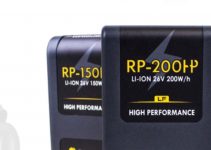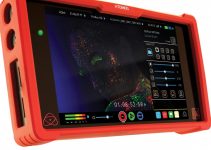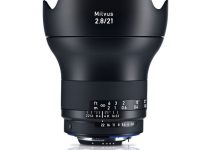The manner in which you light your subject can drastically affect the audience’s perception of your composition. For example, a contrasty light setup may convey a sense of secrecy or darkness. On the other hand, if your shot is balanced with low contrast, the audience may attain a sense of calmness and ease.
Even if you have only one light source available for your shoot, there are many different ways to configure your lights to match your scene. Aputure, known as one of the most popular manufacturers for filmmaking lights, suggests five film looks that you can achieve by using a single light source.
The first lighting setup covered in the video above is known as Flat Lighting. As the name suggests, this light setup produces a flat image with evenly-spread light shining on your talent. Using this configuration results in a clean, simple aesthetic in your shot – perfect for interviews or scenes with simple dialogue. To achieve this look, simply place the light beside or behind your camera, leveled with your subject.
Another setup explained in the video is referred to as Paramount Lighting. This configuration describes the light being placed at a height above the camera, while tilted to look down at the subject. The suggested setup produces images with prominent shadows that adds contrast between the face and neck of an actor. During the Golden Age of Hollywood (1920s to 1960s), Paramount Pictures primarily lit their subjects this way, and this is where the name of the technique initially came from.
Loop lighting is a simple variation on Paramount Lighting, with the only difference being that the light is placed 20 to 30 degrees to either side of the subject. This shifts the contrast to the lower left or right side of your talent – a look commonly associated with dramatic scenes.
Rembrandt Lighting is another classic, yet powerful lighting configuration. Used famously in old paintings, this technique involves positioning the light in a way that casts a small triangle on the side of a subject’s face. To replicate this style of lighting, position your light above the subject, and place it 45 to 60 degrees on either side. This setup results in a very high contrast look on your actor, appropriate for shots aimed at conveying a sense of somber or eeriness.
If you find that the lighting setup may be adding too must contrast on your subject, try adjusting the angle of your light source. Alternatively, you could place a bounce board or reflector on the side opposite to your light to add some fill into the shadows.
The final technique explained in the video is called split lighting. With the light facing your subject directly from their side, you’ll see that half of your subjects face is lit while the other is consumed in darkness. Because of the extreme contrast produced, it’s best to use the technique to emphasize dark moments in your movie – maybe even as a way to foreshadow a character’s dark side.
Although the aforementioned lighting techniques are commonly used, remember that there are multiple ways to take advantage of a single light source in your scene. By understanding basic lighting practices in cinema, consider experimenting with different bounce boards, lighting equipment, and configurations to find the setup that allows you to best tell your story.
[source: Aputure]
Disclaimer: As an Amazon Associate partner and participant in B&H and Adorama Affiliate programmes, we earn a small comission from each purchase made through the affiliate links listed above at no additional cost to you.
Claim your copy of DAVINCI RESOLVE - SIMPLIFIED COURSE with 50% off! Get Instant Access!





